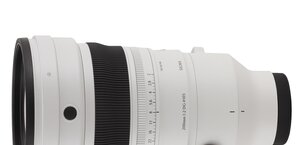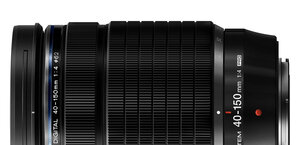Carl Zeiss Milvus 50 mm f/1.4
5. Chromatic and spherical aberration
Chromatic aberration
The Otus 1.4/55 didn’t have any longitudinal chromatic aberration problems almost at all, the Sigma A 1.4/50 had a slightly higher level of that aberration but still it could be called very slight. The Milvus performs very much alike. A delicate cast of defocused images (yellow-green after the focus and reddish before the focus) is visible but that effect is not pronounced so our high assessment of the tested lens in this category remains unchanged.
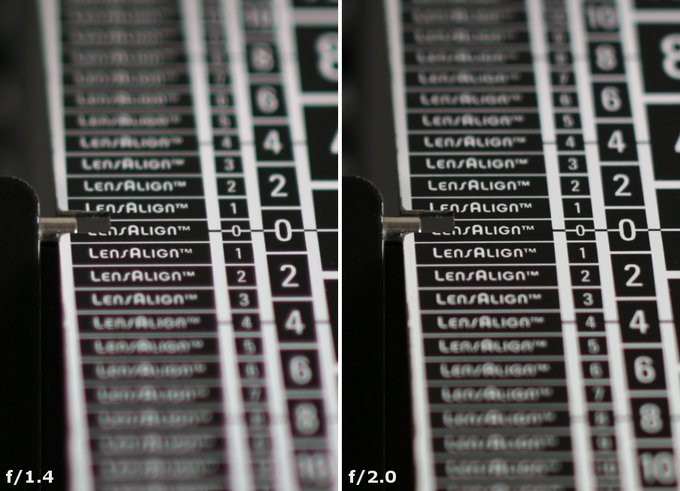 |
Please Support UsIf you enjoy our reviews and articles, and you want us to continue our work please, support our website by donating through PayPal. The funds are going to be used for paying our editorial team, renting servers, and equipping our testing studio; only that way we will be able to continue providing you interesting content for free. |
- - - - - - - - - - - - - - - - - - - - - - - - - - - - - - - - - - - - - - - - - - - - - - - -
There are no problems concerning the lateral chromatic aberration either and the picture below is the proof; it shows the performance of the lens both on the edge of the APS-C/DX sensor and on full frame.
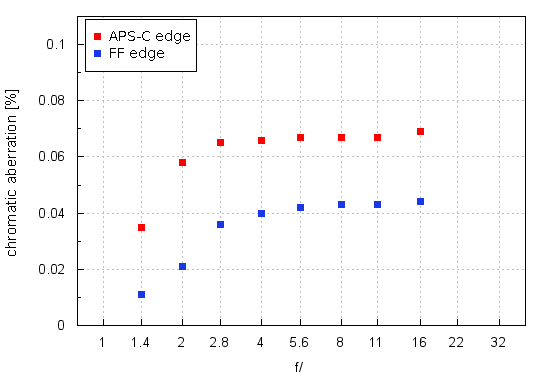
The aberration increases on stopping down the lens from f/1.4 to f/2.8 but then the graph is flattened out. The values remain negligible or low so in real life photos you shouldn’t experience any problems, no matter what aperture you employ.
What’s interesting in the case of the Otus 1.4/55 the course of the chromatic aberration is reversed, with the highest values ranging from 0.05 to 0.07% near the maximum relative aperture. The Sigma A 1.4/50 didn’t show any lateral chromatic aberration at all because the highest value it its case didn’t exceed 0.04%.
| Canon 5D III, f/1.4 | Canon 5D III, f/8.0 |
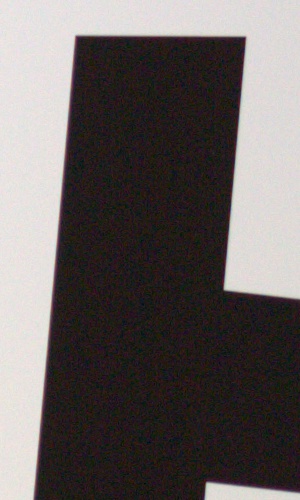
|
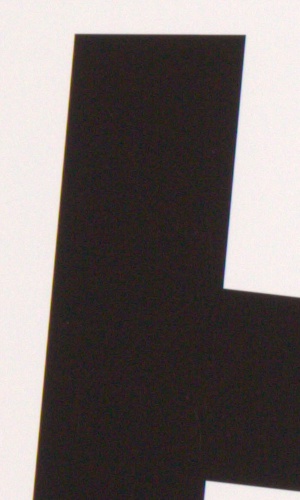
|
Spherical aberration
First photos of this chapter don’t show any ‘focus shift’ effect so the spherical aberration level cannot be very high. That conclusion is confirmed by the appearance of defocused circles of light. If you add to that the acceptable image quality at the maximum relative aperture, without the characteristic sharpness decrease, we might safely assume the spherical aberration of the Milvus, tested here, is corrected in a proper way.
| Canon 5D III, f/1.4, in front of | Canon 5D III, f/1.4, behind |
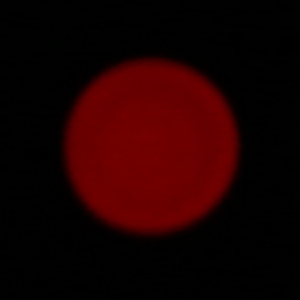
|
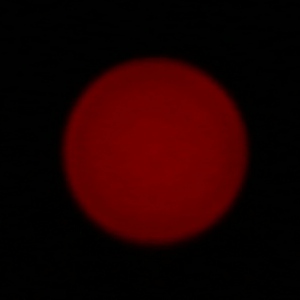
|




